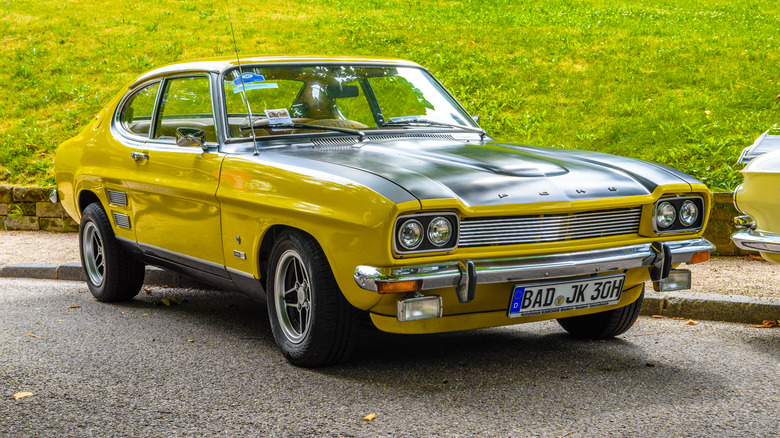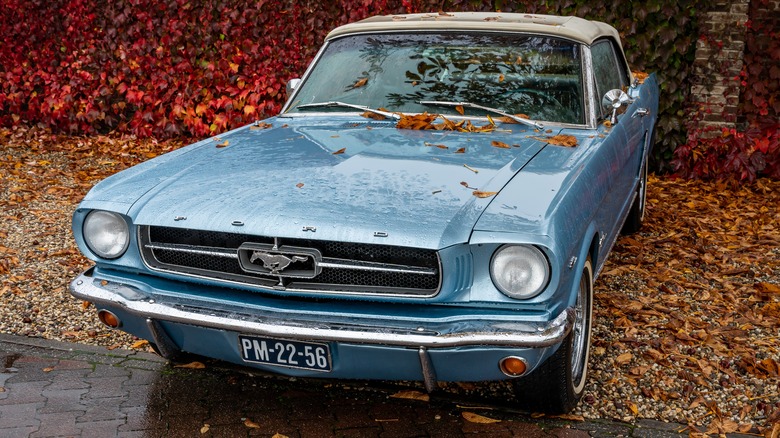How The Mustang Paved The Way For Ford's Overlooked European Pony Car
We may receive a commission on purchases made from links.
The Ford Mustang may not have been the first pony car, but it is certainly the most iconic since its introduction in 1964. With Dodge ending production of the Challenger and Chevrolet retiring the sixth-generation Camaro, it may soon be the last of its kind. These compact, sporty vehicles have been a staple of the American auto culture forever, with their extended hoods, short backs, and muscle car appeal. Their connection with the aesthetics of the United States is key to their popularity. After all, it doesn't get much more stereotypically American than the Ford Motor Company and horses.
That doesn't mean there's no international appeal for the Mustang, but what people look for in a car differs based on the culture, the laws, and the environment in which they exist. Not too long after the Mustang hit the market, the newly formed Ford of Europe looked to create a car for that continent that was similar to the Mustang but was firmly a European car. That vehicle ended up being the Ford Capri. They wanted Europe to have its own pony car.
So, it makes sense that Ford would look to one of the people on the Mustang team to design the Capri, and according to Hemmings, that man was Phil Clark, who tragically passed away in 1968 at the age of 32. That happened to be the year the Capri would hit the market.
From America to England
Phil Clark was one of several designers working on the Ford Mustang, including designing the classic horse logo, as recounted in Randy Leffingwell's book "Mustang: Forty Years." Clark's work on the Mustang began early, as a letter from Ford written to Clark's daughter (via Muscular Mustangs) states he was a stylist on the vehicle that became the Mustang. In 1964, Clark moved to Ford of England and was placed on Project Colt, the codename for the Capri.
Many of the characteristics of the Mustang made their way over to Clark's designs for the Capri. An executive of the Ford Capri Hall of Fame said via Hemmings, "Early Clark renderings show nearly all the classical Capri hallmarks: Long hood, short rear deck, fastback pillars with notchback rear window, squared-off rear quarter, upswept front valence, dramatic side crease, etc."
Just about all of those traits could be applied to the Mustang. The big difference was shrinking the size to fit the European style. The first generation of Mustang had a length of 181.6 inches, whereas the Capri came in at just 167.8 inches. It also wasn't as wide or tall as the American vehicle. It had the look and feel of the American pony car without the muscularity.
The last Capri was produced in 1986. Though its lifespan wasn't as long as the Mustang's, very few cars can say they have had that.

